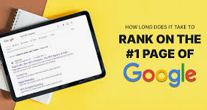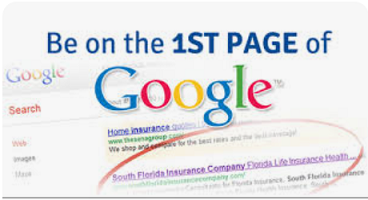First Page of Google: When it comes to online visibility, ranking on the first page of Google is considered the holy grail of search engine optimization (SEO). For businesses, bloggers, and digital marketers alike, appearing in the top search results means higher click-through rates, better traffic, and more opportunities for engagement or sales, But have you ever wondered how many results actually appear on the first page of Google?
Standard Number of Results First Page of Google
Traditionally, Google displays 10 organic search results on the first page. These results are the non-paid, relevant pages that Google’s algorithm considers most useful for the query. However, it’s not always that straightforward. With the evolution of Google’s interface and user experience features, the total number of visible results on page one can vary.
Variations Based on Features First Page of Google
In addition to the 10 organic links, you might also see:
- Google Ads (sponsored results) – Paid advertisements often appear at the top or bottom of the first page, taking up space before organic listings.
- Featured Snippets – A summarized answer that appears at the very top, sometimes even pushing the first organic result lower.
- People Also Ask (PAA) boxes – Expandable questions and answers that Google deems relevant.
- Local Pack / Map Pack – For location-based searches, a map with three nearby businesses often appears.
- Image and Video Results – Multimedia content can appear, affecting the number of traditional text links.
- News or Shopping Carousels – Special content blocks for trending news or product listings.
Because of these elements, the number of actual organic results shown “above the fold” (visible without scrolling) can be as low as 3 to 5. That’s why ranking in the top 3 positions has become even more critical for visibility.

Importance of Ranking on the First Page
Statistically, the first page of Google captures over 90% of the search traffic. Here’s how the click-through rate (CTR) typically breaks down by position:
- Position 1: ~28–32% CTR
- Position 2: ~15–18%
- Position 3: ~10–12%
- Positions 4-10: Less than 8% combined
Anything beyond the first page sees a dramatic drop in visibility and Most users do not click past the first page unless they are conducting deep research or aren’t satisfied with initial results.
First Page of Google Ranking Factors
Google uses 200+ ranking factors in its algorithm. Some of the most influential include:
- Content quality and relevance
- Mobile-friendliness
- Page speed and load time
- Backlink profile
- Keyword usage and optimization
- User engagement metrics like bounce rate and time on page
- Domain authority
To rank on the first page, your content must be well-optimized for both users and search engines,That means clear structure, useful information, keyword targeting, and excellent on-page SEO practices.
How to Improve Your Chances of First Page of Google?
Here are a few practical tips for improving your Google rank:
- Keyword Research: Focus on keywords with a balance of search volume and competition.
- High-Quality Content: Provide comprehensive, original, and valuable information.
- Optimize for Mobile: Ensure your site is mobile-friendly, as most users now search on mobile devices.
- Improve Site Speed: A faster website leads to better user experience and higher rankings.
- Build Backlinks: Gain reputable backlinks from high-authority websites.
- Use On-Page SEO Techniques: This includes proper title tags, meta descriptions, image alt texts, and internal linking.
Finally:
To answer the core question—Google typically shows 10 organic results on the first page, but due to ads, snippets, and other features, the number of actual clickable options can vary significantly. That makes ranking in the top few spots more important than ever.
If you’re aiming for that first-page spot, remember that it’s not just about quantity but quality, authority, and relevance. Google’s goal is to serve the best result for each query—make your page that best result.






Leave a Reply